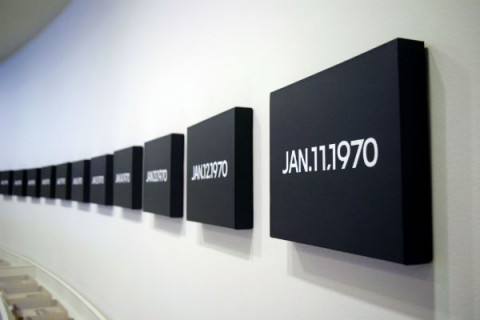
снимка: Ben Davis
A reflection on the transformative power of data in art.
Dataism is an artistic practice that acknowledges how data has become humanity’s principal means of understanding nature, characterizing social processes, developing new technologies, and, increasingly, probing what makes us human. This way of making art is fueled by the conviction that art cannot escape, ignore, or bypass data if it wishes to remain relevant to the post-visual processes that shape our society.
The evolving social, economic, and technological factors that define our existence today are way too interconnected and far too complex for any single individual to grasp. To apprehend and respond to this reality, art must co-opt the tools that science, business, design, manufacturing, and politics have long adopted to engage with the world and spur change. If we want art to matter in the way science, medicine, and the global apparatus of modern finance all matter, then art, too, must learn to speak the lingua franca of our time, and of the future—which is data.
Contemporary artists frequently integrate into their practice the unique aesthetics of numbers and scientific and algorithmic symbolism. Examples range from Alfred Jensen’s The Number Paintings to Bernar Venet’s canvases depicting mathematical formulas to Ryoji Ikeda’s data-verse trilogy, which visualizes and sonifies information lifted from the Human Genome Project and CERN. These practices bring a common appreciation for the retinal beauty and associative power of information conveyed through data and math, exploiting their visual and cultural resonance.
Dataism, however, is about more than the embrace of the visual or aural symbolism of mathematical and algorithmic data. It is about the embrace of numbers’ capability to carry information, and thus to embody meaning. The roots of Dataism, then, are not to be found in Johns’s canvases. We can, however, discern its antecedents in Mark Lombardi’s exquisite pencil drawings, which graph hidden relationships between politicians, businesses, and terrorists; and in Hans Haacke’s politically charged installations, which link museum board members to corporate roles.
Yet these forebears could not practice Dataism as we understand it today. Dataism as a return to Plato’s idea could be explained as a mimesis. But mimesis implies copying, an inherently imperfect attempt to reproduce reality. Copying is not what the Fake News network, which depicts the spread of the Pizzagate conspiracy theory, the first well-documented instance of political fake news, is about. Looking faintly like a sea squid, the image records each act of sharing by both humans and bots that allowed the fake news about alleged child abuse in a D.C. pizza restaurant to reach its massive audience on Twitter. The Fake News network is not a copy. It is, in fact, the most accurate rendition of reality as we know it.
Dataism goes beyond mimesis by accurately rendering dimensions of reality that lie underneath its visible surface. Realism or naturalism is art’s attempt to represent the subject matter truthfully, as the human eye can discern it. Yet realism, being retinally governed, is focused on depicting only what is visible. In contrast, Dataism captures a reality that transcends—or underlies—physicality. It documents, like an X-ray of sorts, invisible but objective societal processes, connections, associations, affiliations, correlations, causes, aspects, and consequences of reality that are simply not accessible to retinal art.
The Big Data revolution offers today’s artists an unprecedented ability to decode complexity through a wide range of new tools and techniques, shifting an artist’s role from data collection to curation, interpretation, contextualization, and messaging. Read the full article by Albert-László Barabási fpr artnet.com